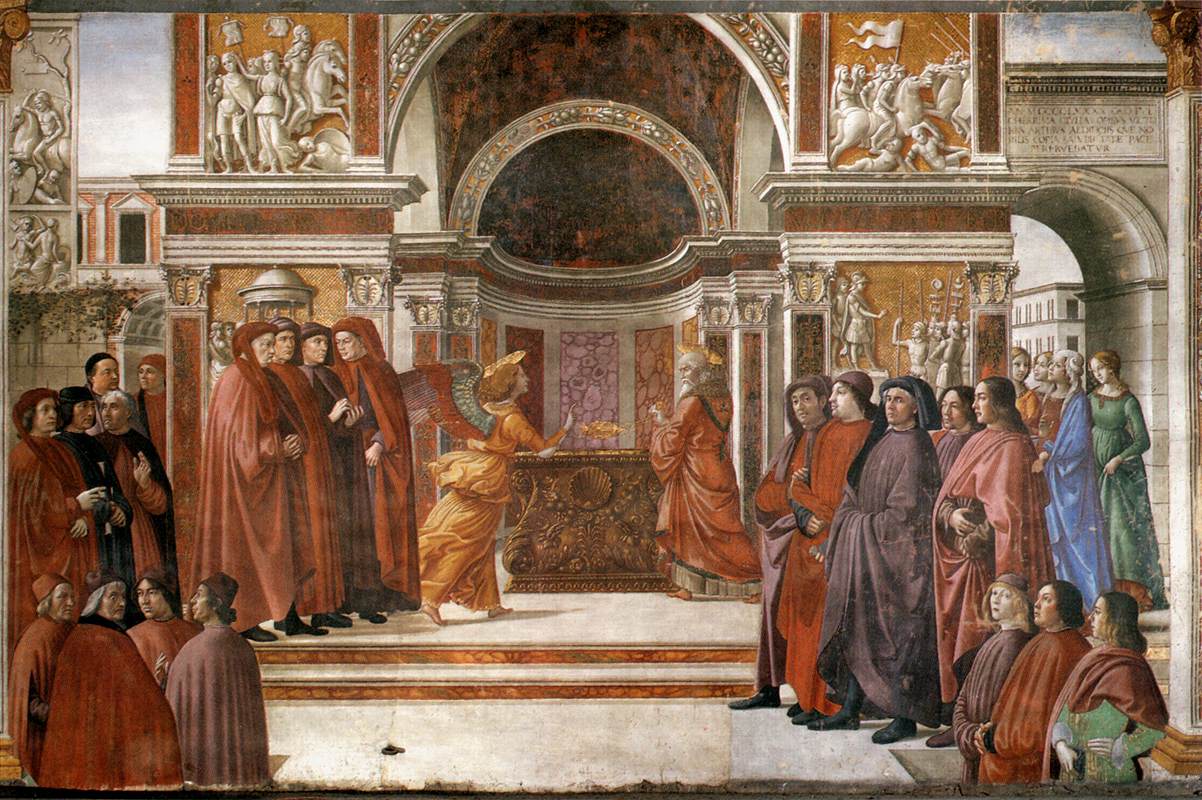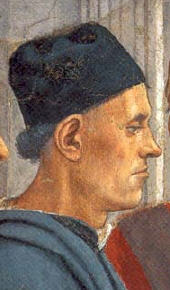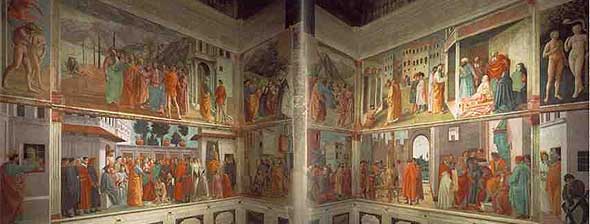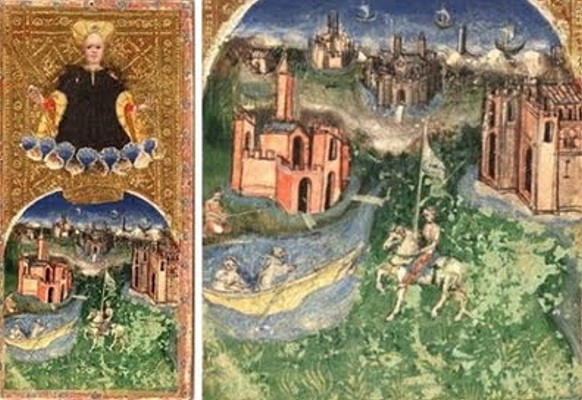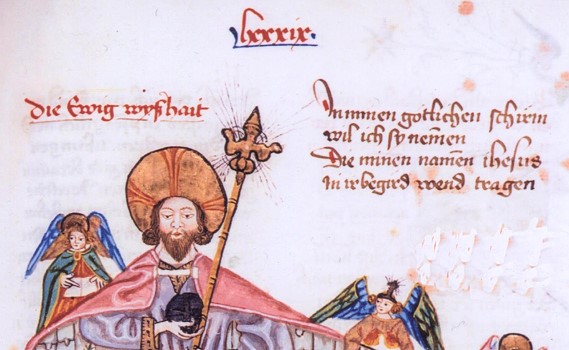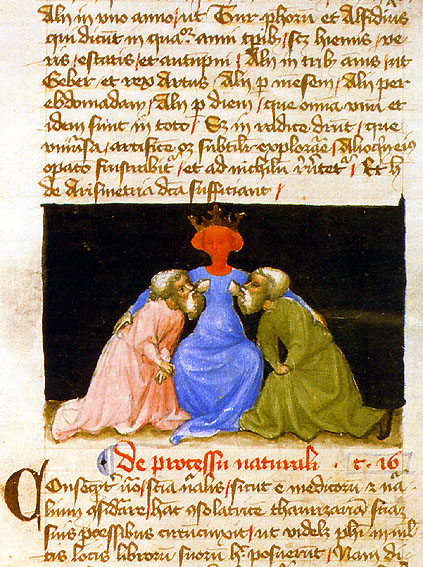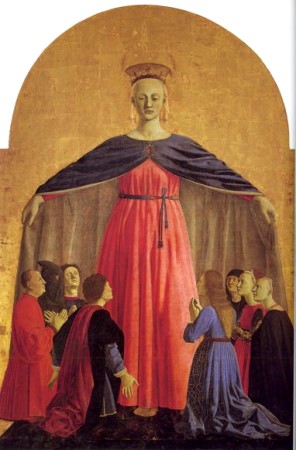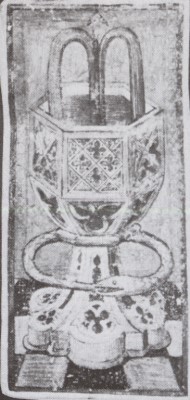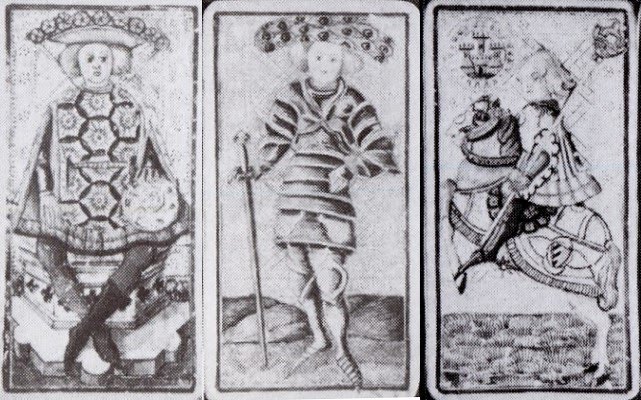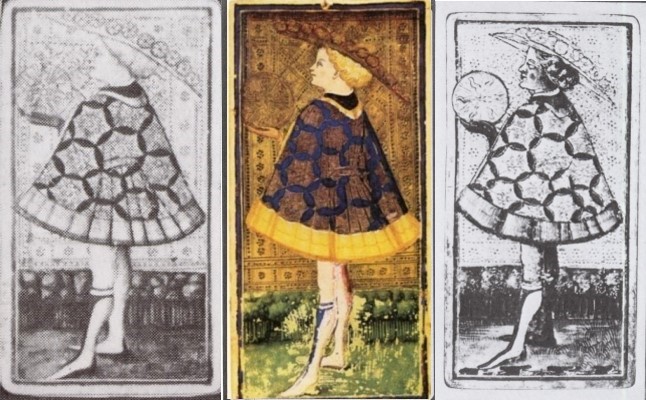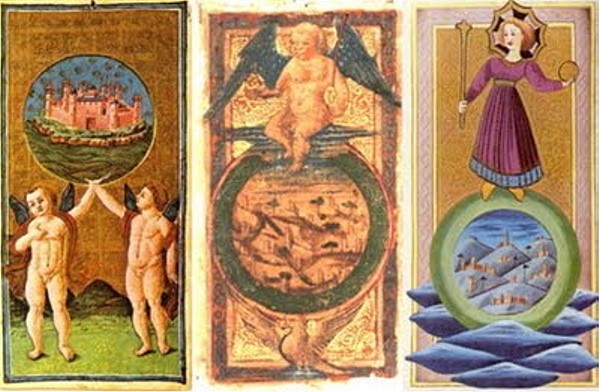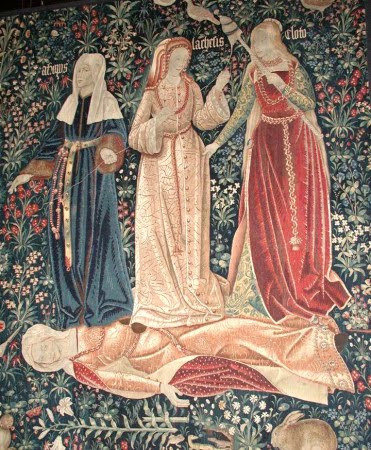MYSTERIES ...
of the historical context are often discovered, when looking on a detailed map.
In this case it's often reported, that Pulci was often in the "Mugello" or in "Mugello" outside of Florence. Actually the Mugello is a great region and not a village or city. The precise location, where the Pulci family had a farm, was Cavallina, a small spot at the map. Near to Cavallina, maybe 4-5 km, is Cafaggiolo, and in Cafaggiolo the Medici got a castle in 1443, which was build by Michelozzo to become a nice residence on the country. "Lorenzo de Medici spend here a part of his childhood."
It's still in existence and nowadays a hotel.
http://www.castellodicafaggiolo.it/english_storia.htm
The Medici family had its source in the Mugello (which also explains something). The distance from the given locations to Florence is ca. 30-35 km, trouble for travelling is given by mountains (at least 450 m has to be crossed, the Arno in Florence has a heigth of 128 m.
In Cavellina (Pulci's location) there is somehow "la Villa Il Palagio - La Torre che tra il 1457 e il 1466 ospitò anche Lorenzo il Magnifico, che si presenta
con un elegante prospetto classico con disegni sagomati, frutto della ristrutturazione ottocentesca."
The location was rebuild later, but it's stated, that Lorenzo between 1457 - 1464 was here as a guest ... which includes the deciding period for the Morgante (1461-62 ... it's said, that 14 of the final 28 canti were made then).
Well, one cannot be sure if one occasionally meets inventions of Italian tourism interests.
... but somehow it has logic.
Pietro de Medici was only second son and Cosimo, Lorenzo's grandfather, was ruling the family and the state. The elder brother Giovanni, Pietro and Cosimo, all had trouble with the gout. Giovanni had a son himself, but this died 1463 and short after it, same year, Giovanni died himself. In this year of death Cosimo made the deciding steps to build the platonic academy - likely in the context of the death of his oldest son, a turn away from money towards philosophy, as an an inner change.
The ship of the family had turned radically.
All the elder Medici had gout, and Pietro's state was the most bad (but he survived longest). Butween these "helpless" persons the position of Lucrezia Turnabuoni, wife of Piero and mother of Lorenzo ...
.. (here in 1475, 50 years old) was strong. She was it generally by context ...
Alberti mentions in On Painting the early fifteenth-century custom of introducing portraits of well-known and worthy citizens in religious narratives. This tradition continues in the family patronage of public religious commissions of the late fifteenth century. It also gives scope for female portraits to be included in a very important genre, that of collective civic portraiture. Perhaps the best example of a religious commission which stresses the significance of public display in such a context, while at the same time illustrating the difference of men's and women's ideal roles and behaviour in late fifteenth-century Florentine society, is provided by [a] series for frescoes by Ghirlandaio and his workshop. The decoration of the apse (cappella maggiore) of the Dominican church of Santa Maria Novella in Florence, commissioned by Giovanni Tornabuoni in 1485, was carried out between 1486 and 1490. This was the largest fresco commission in Florence in the last decades of the fifteenth century, for one of the most important churches of the city. Giovanni Tornabuoni was one of the wealthiest and most influential men in Florence, tied to the Medici by links forged by marriage, business and political interests. His sister Lucrezia was the wife of Piero de Medici and the mother of Lorenzo the Magnificent. In the same year as his sister's marriage, 1444, Giovanni had first entered the Medici bank. In 1465 he became the director and partner of the Medici bank in Rome, and eventually treasurer and financial adviser to Pope Sixtus IV....
.. from
http://employees.oneonta.edu/farberas/a ... hapel.html
It's interesting to see, how small the 4 humanists, between them Marsilio Ficino are painted (bottom left) ...
... in a minor role, as it seems.
Pulci is not included.
But Pulci appears at another picture, at least Vasari had this opinion:
Pulci in discussion at the left:
"Vasari had already identified a number of contemporary figures in those painted by Filippino: the resurrected youth was supposedly a portrait of the painter Francesco Granacci, at that time hardly more than a boy; "and also the knight Messer Tommaso Soderini, Piero Guicciardini, the father of Messer Francesco who wrote the Histories, Piero del Pugliese and the poet Luigi Pulci.""
http://www.wga.hu/tours/brancacc/theo_pet.html
"Filippino Lippi: Florentine painter, the son and pupil of Fra Filippo Lippi. who died when the boy was about 12. The boy completed his father's work (or at least cleared up his estate) in Spoleto (the final receipts for Filippo's frescoes in the Spoleto Cathedral was signed by Filippino) and he set off alone for Florence on 1 January 1470. He also studied with Botticelli and learned much from his expressive use of line, but Filippino's style, although sensitive and poetic, is more robust than his master's. The first certainly datable work by Filippino is the Annunciation on two tondi (1483-84, San Gimignano).
His first major commission was the completion of Masaccio's and Masolino's fresco cycle in the Brancacci Chapel of Sta Maria del Carmine, which had either been left unfinished by Masaccio or had been partially destroyed. This task he carried out with such skill and tact that it is sometimes difficult to tell where his work begins and that of more than half a century earlier ends."
http://www.wga.hu/frames-e.html?/bio/l/ ... graph.html
"Originally the chapel was cross-vaulted and lit by a very tall and narrow two-light window; the last of the stories from the life of St Peter, his Crucifixion, was probably painted on the wall below the window, but this fresco was destroyed soon after Brancacci was declared a rebel so as to cancel all traces of a patron who had become politically embarassing. The chapel, formerly the chapel of St Peter, was reconsacrated to the Madonna del Popolo. It appears that Felice Brancacci was subjected to an operation of "damnatio memoriae", for all the portrayals of people connected to the Brancacci family were eliminated from Masaccio's fresco of the Raising of the Son of Theophilus. The scene was then restored in 1481-82 by Filippino Lippi, who also completed the cycle."
http://www.yourwaytoflorence.com/brancacci.htm
Picture in context (Brancacci Chapel):
It's an interesting detail ... After his trouble in Florence ending in a clash with the Accademia, Franco and Ficino in 1476 Pulci took steps to reconcile (likely. ca. 1479) and was between 1481 - 1483 really in Florence and finished the Morgante (it's said with the help of Lucrezia Turnabuoni ?). Lucrezia died 1482, Pulci was ready at begin of 1483
The Fresco - given to the year 1481-1482 (see above), so precisely in the time of Pulci's return - shows the return of a lost (dead) son.
"This scene illustrates the miracle that Peter performed after he was released from prison, thanks to Paul's intercession. According to the account in the Golden Legend, once out of prison, Peter was taken to the tomb of the son of Theophilus, Prefect of Antioch. Here St Peter immediately resurrected the young man who had been dead for fourteen years. As a result, Theophilus, the entire population of Antioch and many others were converted to the faith; they built a magnificent church and in the centre of the church a chair for Peter, so that he could sit during his sermons and be heard and seen by all. Peter sat in the chair for seven years; then he went to Rome and for twenty-five years sat on the papal throne, the cathedra, in Rome."
Pulci was a "lost son". Well, an interesting detail ... but back to 1461-62 and to medici castle on the country.
*********
Luigi Pulci is about 29 years and a poet in a family of poets. Of these some will later write pieces for representations of holy actions, a sort of "holy theatre", taking place in churches or on the street. Also Lucretia Tornabuoni will do that and generally she's very interested in poetry, she writes herself and some writing have survived.
Lorenzo de Medici 11-12 years old, and, thanks to the gout in the family, the elder Medici are not in the condition to reply of the vital activities for children.
Lucretia Turnobuoni is a mother of 5-6 children ... she hires Pulci as a sort of educator. Things are practical, cause Pulci is near to one of the Medici castles. The locality is very nice there, lonesome and surely adventurous for children. Lorenzo will have later much interest in hunting. Pulci - all what we know - should have had a sense for beauty of nature himself (he loved his life in the Mugello and even climbed a romantic mountain).
So we see - in the inner eye of the researcher - Pulci wandering through the forests and mountains around Castello Cafaggio, around him a band of children and telling them fantastic stories about this and that. Well, Pulci is perfect, cause he knows there every stone and farmer, cause he himself is grown up in the same region, and more of that, he loved the region.
This natural situation (enriched with a lucky accident called "Pulci") is now filled with a little program from the sight of the mother, who wishes that the young band learns a little bit about history and poetry. So Pulci gets the job to work about Orlando, a theme, which fits with the actual crusader-theme (Osmanic problems) and with an interest of the Medici for the French market.
So, whatever had happened there ... it's very obvious, that the "Morgante" was initially a book (or better "life poem") for children, or young boys, cause this was the concrete and direct use for it in the moment of 1461-62. And one should be sure that the whole didn't come alone from Pulci's mind, but that it was made in dialog with a participating audience, which added hopes and fears, ideas, interests and concrete details of the region, which in the children-fantasies transformed to bewitched castles, dangerous enemies and even giants. And Morgante was actually the "giantious" Pulci himself and Morgante's good friend Orlando the smaller Lorenzo and Rinaldo likely the a few years younger brother Giulio.
************
Of the author's, that I studied to the Pulci stuff, nobody talks of a "children story". Also nobody talked about 3-4 kilometers between Cavallina and Castle Cafagglio.
The common great thinking error.
People research a successful piece of world lliterature. As they know, that this became a "successful piece of the world literature", they imply, that the author already knew, that this work would become successful. So - according this imagination - the author already intended that he would work 10 years or longer on his work and that he took his work very serious from beginning on. And they think, that the author was already famous just in the moment, that he started to write. Somehow it's constantly overrlooked, that the literary success is a process in stages, in which the author has his life, from little or no fame to finally fame and success (and this often enough long after his death)
So in Pulci's case, they overlook, that the whole plot "knight with giant have adventures" is a children story. Although they're told in each book about Pulci, that Pulci is the educator of Lorenzo, who is 11 years old. No .. the story is transformed to a story, in which Lucrezia Tornuaboni gave Pulci the commission to write a piece of world literature.
Similar these theories about Tarot origin. Constantly people treat to object, as if Tarot or Trionfi cards were already famous in 15th century. As if anybody would have known, that this would become an project, which would run over the whole world with its follow-ups. Just the same thinking error.
Another time more.
Merry Christmas altogether.










